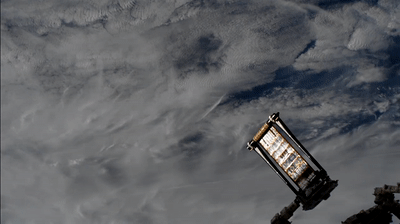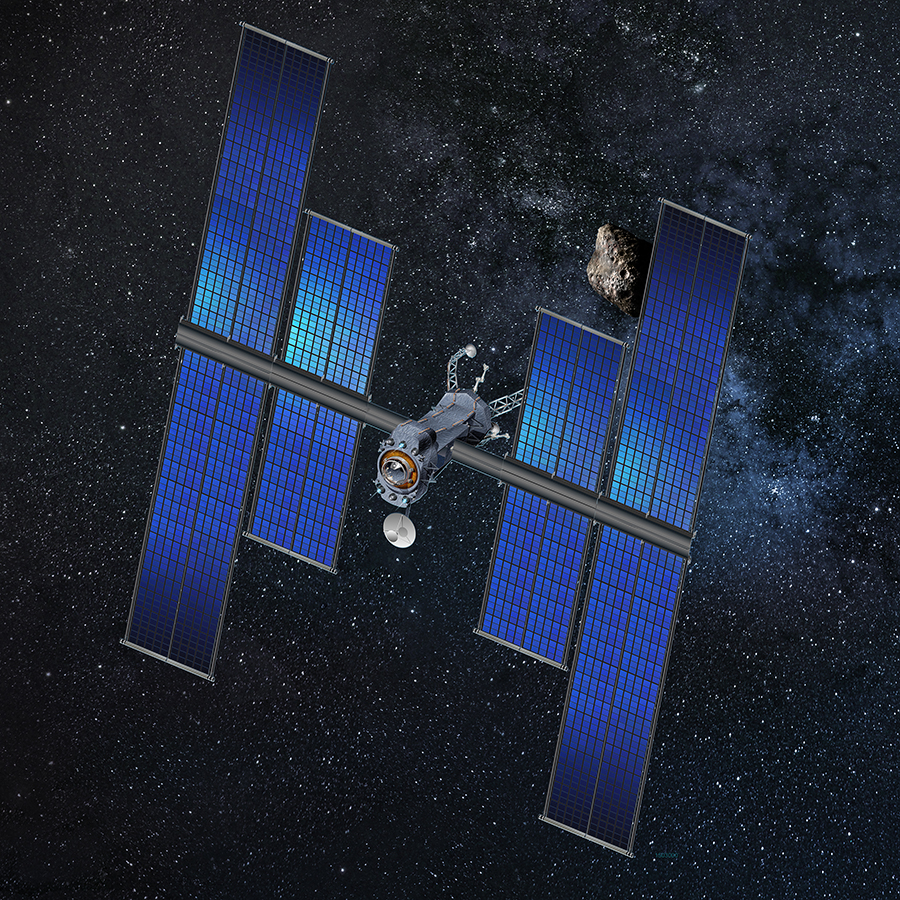NASA Tests Flexible Roll-Out Solar Array on Space Station (Video)
NASA's new compact high-power solar array made its debut on the International Space Station Sunday (June 18), allowing astronauts to test the technology's durability for deep-space missions.
The Roll Out Solar Array (ROSA) is incredibly lightweight and flexible, meaning that it can easily be packed into a rocket for launch. ROSA is a collaboration between NASA's Space Technology Mission Directorate and two private companies, including Deployable Space Systems (DSS) of Santa Barbara, California, and Space Systems Loral (SSL) of Palo Alto, California.
ROSA is designed to power missions using solar-electric propulsion spacecraft. The solar array wing technology is expected save on storage space and cut costs for long-distance trips beyond Earth, according to a statement from NASA. [Beaming Solar Power From Space (Video)]

This past weekend, engineers on the ground remotely rolled out the solar array using the space station's Canadarm2. The array will remain attached to the robotic arm for seven days. This experiment will test the overall effectiveness of the advanced solar wing. ROSA was delivered to the orbiting lab on June 5 aboard the SpaceX Dragon cargo ship.
"We want to show that we can pull the wing back in in a predictable way," Jeremy Banik, the experiment's principal investigator and a senior research engineer at the Air Force Research Laboratory in New Mexico, said in a statement. "A practical reason is that we have to pull it back for stowage after this investigation, but it will be good to know it can be done for future applications, potentially for a highly maneuverable spacecraft."

If successful, ROSA could help make NASA's robotic and human journeys to Mars and beyond possible. Incorporating the ROSA technology into Martian rovers, for example, would allow space vehicles to travel the planet's rugged surface more efficiently, since the solar arrays could be rolled up and stowed away when not in use, NASA officials have said.
"We get more power by using larger solar arrays. But efficiently packaging them for launch and then deploying those big arrays by a spacecraft has been the challenge," Al Tadros, SSL vice president of Civil and Department of Defense Business, said in a June 8 statement. "What the work on ROSA has done is develop a technique to deploy very large surface areas of flexible solar arrays, doing that efficiently with low risk. It's more power without increasing the mass dramatically."
Get the Space.com Newsletter
Breaking space news, the latest updates on rocket launches, skywatching events and more!
Not only does the ROSA technology further NASA's deep-space exploration initiatives, it also benefits the commercial communications satellite industry — which provides direct-to-home TV, satellite radio, broadband internet and various other services to those on the ground, according to the statement.

Previously, NASA has tested other solar array technology that folds and unfolds like origami to save space. But ROSA is made from lightweight mesh material that can be rolled up around a spindle and stowed in a more compact cylinder form.
ROSA is also scalable, which means it can be configured to work with other ROSAs to produce high-power levels, and can easily be deployed in a simple, yet reliable, two-stage process that takes about 10 minutes, Michael Ragsdale, research and development project manager at SSL, said in the statement from NASA.
"It's very unique and innovative, different than anything that's been done before," said Brian Spence, president of DSS, which is helping SSL incorporate the technology into its SSL 1300 series platform of high-power satellites. "However, it's also extremely simple. That aspect of the technology really lends itself well to being accepted by end users, like SSL."
Editor's note: Video produced by Space.com's Steve Spaleta.
Follow Samantha Mathewson @Sam_Ashley13. Follow us @Spacedotcom,Facebook and Google+. Original article on Space.com.
Join our Space Forums to keep talking space on the latest missions, night sky and more! And if you have a news tip, correction or comment, let us know at: community@space.com.

Samantha Mathewson joined Space.com as an intern in the summer of 2016. She received a B.A. in Journalism and Environmental Science at the University of New Haven, in Connecticut. Previously, her work has been published in Nature World News. When not writing or reading about science, Samantha enjoys traveling to new places and taking photos! You can follow her on Twitter @Sam_Ashley13.









